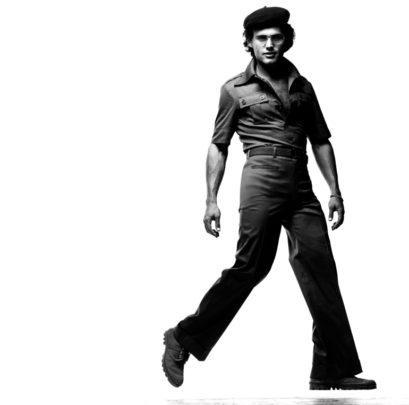
The last 12 months have been great for raising the voice of the over-60s community at Starts at 60, something we feel strongly about doing. During the next few weeks we are celebrating the blogs that resonated with readers the most throughout the year. This blog is one of our Top 30 blogs for 2018.
There were many advantages for short people when flares (bell-bottom trousers) and platform shoes hit the fashion scene in the 1970s. It is amazing how a trend, even a ghastly one, can entice and amass a following. I was suitably enticed and strutted with the in-crowd in my flares and platforms. I have no photos to belie the belief, but I think the style made me tall, slim and glamourous.
Now, as I look back at this trend I cannot help but gasp at the hideousness of the style. Being height challenged, platform shoes were flattering, as the 6-inch boost created a taller, slimmer me. However, this younger version of myself had no concept about creating a balanced look, preferring to follow a trend that sadly challenged your vision as it moved from a slim trouser line, to a ghastly wide calf, then ending on stumpy, clumpy shoe.
Platform shoes were a challenge to wear, they gave you height and an awkward rocking gait, formed through an inability to lift or flex your feet as you walked. There was no comfort in this fashion item, they were heavy and clunky, with wide strapping attached to flat incredibly inflexible cork or wood stacked platforms. Personally, they were not good for my ankles, as now evident in weaken tendons from the number of times I wobbled, tripped or fell from an ungainly height.

What a fashion disgrace, no longer the tall, sassy girl, strutting proudly, but a short, dumpy imposter, tripping over trousers now too long and wide, and painfully limping, with the offending shoes dangling, unwanted from my hands. Spectators to this regular occurrence, probably surmised too much alcohol, but it was more ignorance and a need to be ‘in-fashion’ that resulted in many twisted and turned ankles.
This fashion trend crossed both sexes as men too got on-board. The city’s ‘man-about-town’ could be seen during the work-week in the male version of this unsightly attire. Teaming high-waisted, flared trousers with knitted and fitted body-shirts, wide and short floral ties, and fashionable long untamed hair, tottering along on chunky platforms. The male version of the platform shoe was, modelled on the basic black walking shoe, with a round toe and sectioned toe cap area. This basic flat shoe was then dressed-up with the addition of a glossy, brown or maroon upper, attached to an exaggerated 3-inch sturdy sole, to meet the platform status.
Weekend casual wear threw dress-sense to the wind as these male fashionistas, still in their heavy platforms, replaced their block-coloured body-shirts, with open-necked, loud floral patterns, that fitted tightly into pocket-less high waisted, flared jeans. This trend, passable on slim men, but on short stocky men and bandy-legged country boys, a sight to behold.
From this trend, evolved the biggest fashion faux pas ever: the flared leg, one-piece, fitted jump-suit, worn by both men and woman in this era. Women with their curves could manage the style, but men who traditionally do not have a waist-line, could not do it proud.

John Travolta wore it well and made it look sexy in Saturday Night Fever but for the average male it was cringeworthy. Many a female had to shield her eyes, when Travolta impersonators, clad in their sexy jumpsuits, traversed the disco floor, moving seductively under the shimmering disco ball, unaware their family jewels, not too well secured, were loosely following their every move.
Such an embarrassing fashion trend left forever in the 1970s, I hope.